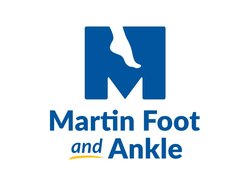Experiencing an injury to your foot or ankle can pose a significant challenge for athletes, whether you're a seasoned pro or a weekend warrior. Safely navigating the journey back to sports and regaining your footing requires meticulous planning and diligent rehabilitation. In this blog, we'll delve into the essential steps and expert guidance from podiatrists and physical therapists, empowering you with the knowledge and strategies needed to effectively return to sports following an injury.
Seek Professional Evaluation
The first and most crucial step in returning to sports after a foot or ankle injury is to seek professional evaluation from one of our qualified podiatrists. We can assess the extent of your injury, provide an accurate diagnosis, and develop a personalized treatment plan tailored to your specific needs. Remember, ignoring or downplaying the severity of your injury can lead to further complications and prolong your recovery time.
Follow a Structured Rehabilitation Program
Once you've received a diagnosis, it's essential to adhere to a structured rehabilitation program we prescribe. This program may include a combination of physical therapy, exercises, stretching, and modalities such as ice therapy or ultrasound to promote healing and restore function to the injured area. Your physical therapist will guide you through each step of the rehabilitation process, ensuring that you progress at a safe and steady pace.
Focus on Strengthening and Conditioning
As you progress through your rehabilitation program, focus on strengthening and conditioning exercises to rebuild muscle strength, improve flexibility, and enhance stability in the foot and ankle. Incorporate exercises that target the muscles surrounding the injured area, including the calves, ankles, and feet. Cross-training activities such as swimming or cycling should be considered to maintain cardiovascular fitness while minimizing impact on the injured foot or ankle.
Gradual Return to Sports Activities
As your strength and flexibility improve, gradually reintroduce sports-specific activities into your routine, as directed. Start with low-impact exercises and drills that mimic the movements required for your sport, gradually increasing intensity and duration as tolerated. Pay close attention to any pain, swelling, or discomfort during activity, and adjust your training accordingly to avoid exacerbating the injury.
Use Proper Footwear and Protective Gear
When returning to sports, wearing proper footwear and protective gear is essential to minimize re-injury risk. Invest in high-quality athletic shoes that provide adequate support, cushioning, and stability for your specific sport. Consider using orthotic inserts or ankle braces for added support and protection, especially during the initial phases of rehabilitation.
Listen to Your Body
Finally, listen to your body and prioritize rest and recovery as needed throughout the rehabilitation process. Pay attention to any warning signs of overexertion or fatigue, such as increased pain, swelling, or decreased range of motion. If you experience persistent or worsening symptoms, consult your healthcare provider for further evaluation and guidance.
With dedication, patience, and the right support, you can overcome your injury and get back to doing what you love. Contact our team to schedule an appointment to ensure you're on the right path to recovery.
